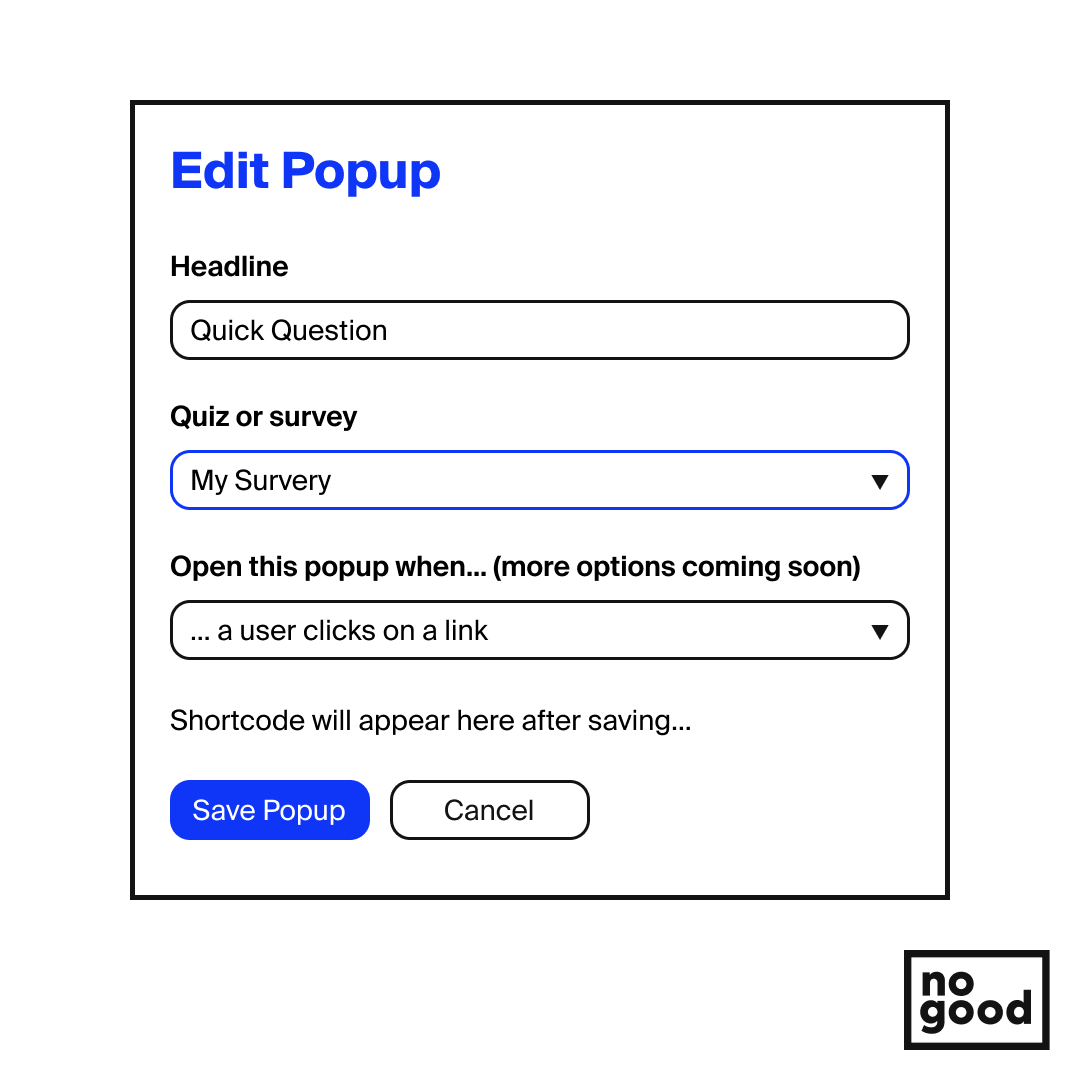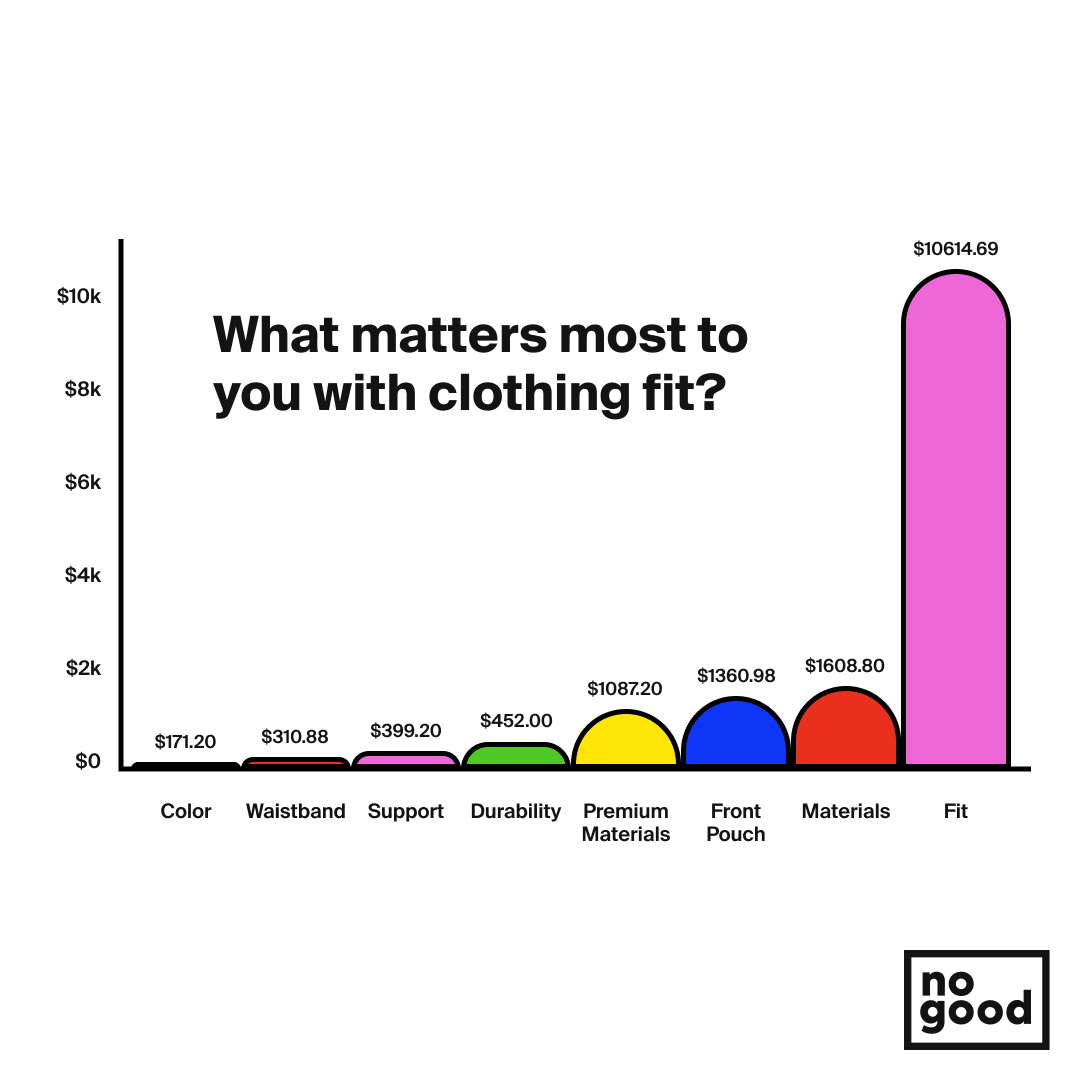I’m sure you’ve heard of the many instances of e-commerce businesses failing to meet revenue goals or the increasing challenge of keeping acquisition costs down. It feels like everyone is going through a difficult time in the e-commerce world (a lot certainly are) — and attribution isn’t going to get better any time soon. This is a concept businesses have to accept, understand, and most importantly act on.
Arguably one of the latest, most impactful terms in the industry is zero party data (ZPD) — a new tool with a lot of potential. But here’s the thing: everyone’s talking about it and collecting it, but not everyone is using the data in an impactful way. The challenge we all face today is the lack of attribution and rising costs. How can we address that head-on?
Everyone talks about ZPD under the lens of personalization. “With ZPD, you can personalize all of your email flows, your retargeting ads, and so much more!”
While this is true, and it’s not a bad idea, there’s a truth most don’t realize at the very beginning of this process: the resources needed. In order to truly personalize your communication engine based on collected ZPD, you’re going to need a lot of resources around content creation simply just because of the many permutations of types of users you’ll likely be able to create from the combinations of your ZPD.
Even if you keep this personalization “high level”, there is still a need to create more content and some teams simply don’t have the bandwidth to accomplish that in a reasonable amount of time. Throw in there the idea of AB testing + personalization, and you have yourself an immense list of tasks.
To clarify: I’m not saying personalization is a bad move. It’s a great move. It helps create more of a 1:1 relationship with your audience and likely increases the perceived value of the experience of interacting with your brand online. “Hey, they care about my interests. Nice!” I’m just saying it takes a lot of work and smaller teams may not be able to squeeze this orange to the fullest.
But you see, there is a way to squeeze this ZPD orange more efficiently by thinking beyond personalization functions.
The issue that still needs to be addressed is attribution and rising costs.
While there are many attribution solutions out there that will help you understand your paid media landscape much better than just looking at native dashboards, it won’t necessarily bring down rising costs. The best way to do that is to achieve true relevancy with the audience generating the impressions for your ads.
What if we were to put that ZPD to use, not from a personalization perspective, but from an acquisition one. Why not use ZPD to dictate what our ads, landing pages, lead magnets, etc should consist of? Surely it would make a lot of sense to tie this data back to acquisition efforts so that we can achieve a better sense of relevancy across our paid media audiences. It makes complete sense. This is what we’re going to talk about today. A specific way to tie ZPD back to individual campaigns and even ads in order to make your ads more relevant, more clickable, and more importantly, cost-effective.
Zero Party Data Collection Strategy is Broken Down into 3 Steps:
- Collecting the right data
- Analyze the data to uncover revenue-based patterns
- Impact and drive optimization decisions across the buying journey
1. Collecting the Right Data
You’ve probably seen dozens of e-commerce websites do this. You land on their homepage, you get attacked by an instant pop-up shoving a discount offer in your face. Alright, let’s say you bite. You enter your email in order to get the discount. Then, you immediately get asked for your phone number. This is very much a company-first approach to presenting things to a user on a site. Instead, we should think of a customer-first approach.
Do you really want to give out your phone number to a company as soon as you encounter them online? Is that maybe a bit early in the relationship? Do I really want to be presented with a pop-up AS SOON as I land on a site? I won’t go into detail about the company-first journey vs customer-first journey, but you can read more about it from folks like Jon Ivanko over on LinkedIn. He’s spearheading this concept and has a lot to say about it!
Not only is asking for email and SMS, not enough anymore (consumers now expect more personalization in their experiences online than before), but it also doesn’t give you data that allows you to create a better experience for them, nor does it give you anything to feed back into your acquisition efforts.
Sure, you get an email and a phone number, so you can send them communications and you can upload them to FB for lookalike audiences. But, do you know what they care about? Do you know their interests? What pain points stop them from purchasing? This is far more valuable than a phone number if you think about it.
Also, what we’re really trying to collect is data that shows intent. While you could make the argument that the exchange of information for a discount code is showing intent (and we’d agree with that), you’re not tying any important data to that intent signal. This is where things get interesting.
Imagine a pop-up experience that is not annoying (strategic delays) and presents you with an offer that you’re interested in. It asks you for your email address and once you submit it you aren’t asked for your phone number.
Instead, you’re presented with a series of relevant questions about your interests and what is important to you when shopping. Once you answer these simple questions, you are thanked and you’re given what was promised. The answers to these questions will give you far more context than just an email and phone number. We’ll touch on each question specifically later in this piece.

Where would you like this popup? Well, it could be in several places. But the ones that make the most sense are the home page, the product page, the cart page, and on any landing page that you’re driving traffic to.
Homepage
Consider a delay of 10 seconds or something along those lines. The goal here is to not annoy a brand new user with an instant popup. Instead, we give them some time to explore the page and what the brand is all about. A full-screen takeover probably makes the most sense here, as it gives the messaging good exposure and makes it clear to the user that there is an offer available.
Product page
A longer delay here would make sense, as there likely is more detailed information on the product page for a user to consume. Give them the chance to do so before triggering a popup. 20-30 seconds might be good for this. Also, consider using a different format other than the full-screen takeover, as that will feel intrusive if done more than once. You could try a slide-out here which won’t feel like you’re forcing the user out of the experience.
Cart Page
This is meant for the users who have checked the cart page for specific reasons, like looking at all the items that are currently in the cart. This should trigger immediately on page load. Usually, this user may be ready to complete a purchase. You might be thinking, why would we show an offer to this user if he/she is ready to buy? Remember, good data is more valuable than any discount you give out. Also, this eliminates the negative feeling a user might have if they KNOW there is an offer available, but can’t get to it because they closed the earlier popup. Keep in mind we want to create a customer-first journey, not a company-first journey.
Landing Page
Getting the most value out of every click you pay for always makes more sense. So, if you’re sending paid traffic to a landing page, there’s no reason why you shouldn’t be capturing ZPD. Consider embedding the offer into the landing page, potentially higher in the page, and then also having a slideout offer that triggers on a percentage of the page scrolling. This way, users who miss the embedded offer toward the top, will see the slideout if they make it to the bottom of the content on the page.
If you assume a 5% sign-up rate, and you get around 10,000 sessions per month and let’s say your experience contains 4 questions, then you’re looking at 500 subscribers per month with 4 powerful data points each. That’s enough to start giving you insights about how your brand should lead in terms of messaging and potentially even products.
It’s important that we take a minute to digest an important concept here. The offer experience always follows this format:
- Offer + email submit form
- Questions
- Reward
It’s critical that we ask for the email upfront. Notice we’re not asking for a phone number. This is because that wouldn’t be a customer-first journey, and a phone number is something we will get anyways once they make a purchase, which is the entire point. Collecting data points early on just to collect them won’t have as much of an impact as collecting the right data and putting it to good use. But the main reason as to why we’re asking for an email upfront before the questions are because we want to tie these answers to purchase intent.
If anyone exchanges their information for, for example, a discount, then that shows a clear sign of purchase intent. Why else would you want a discount? And by asking the questions at that same moment, you’re essentially capturing ZPD at the moment of intent. This is important to understand because this is the main reason why you can trust this data when making acquisition optimization decisions. Purchase intent is the key here.
Now that we’ve thought that through, we can talk about the questions. What exactly are we asking users? This is where things get very interesting. Let’s go one by one and talk about the purpose for each.
Interests
What do you sell? Who do you sell it for? If you’re a jeans brand, “What styles are you interested in?”
People have different reasons for checking out and browsing an online store. By asking this question, we can learn about the user’s interest but more importantly, it narrows what kind of products the user is looking for. We can use this to present relevant content to them throughout their journey.
Benefits
How do people view your product offerings? Would you like to know what people care about the most when shopping online for your product category?
“What matters to you most when shopping for jeans?”
This is a way to ask about the user’s pain points of the problem they’re looking to solve. I’m sure you can see the value in knowing that. Once known, there are several ways in which you can apply this data. For example, you could show social proof that highlights the specific pain point/feature/benefit chosen by the user. As a PPC and email marketing agency we utilize this across email campaigns, retargeting ads, and much more.
Quantity Owned
What quantity would give you the most purchase intent indication? “How many pairs of jeans do you own?”
If someone buys a lot of something or participates a lot in an activity, then this can show us the potential for someone to convert.
If you’ve bought a lot of jeans before, you’re likely to buy more. Also means you’re a potential repeat customer.
Ready to Buy?
Do you know in what stage of the funnel each user is? “When are you looking to buy your next pair of jeans? Today? In a few weeks? In a few months?”
This simply tells us who’s “hot” and “cold”. Someone selecting Today is likely to be more valuable than someone selected In a Few Months.
Of course, you can have more questions that are relevant to your business, but these can be seen as foundational questions that can help you enrich user profiles that have specific purposes and can be used for a number of initiatives.
In terms of data storage, we mainly use Klaviyo. All of these answers pass over to Klaviyo and the result is enriched subscriber profiles with multiple data points for each.
2. Analyze the Data to Uncover Revenue-Based Patterns
Now we’ll talk about what to do once you have data collected. While this wasn’t mentioned before, it is critical that you are able to pass any UTM parameters into Klaviyo for each user that answers the questions. This way, for each profile you’ll have the answers from the questions and source/medium plus any other UTM parameters you are using (we strongly recommend campaign, ad set, and ad names – or IDs if you’re comfortable syncing them up with the actual names via a VLOOKUP). I repeat, this is critical for the analysis, so make sure this is possible when setting up the offer experience.
Ok, let’s continue. In Klaviyo, you export the subscriber data broken down by each question, historical lifetime value, source/medium, campaign, ad set, and ad (based on the UTM system you use).
Once on a spreadsheet, you can create a pivot chart to show each question and the responses visually quantified (we like bar charts), with the ranking metric being Revenue and Selections. So, basically, 2 bar charts per question, one showing revenue by the answer and the other one showing selections by the answer. You should have 8 bar charts if your offer experience contains 4 questions. This alone should already give you some insights into what is happening. And, remember, this data is coming directly from users who are buying your products, so it’s very valuable.

You can also concatenate (Excel formula used to combine elements from various cells into a single cell) all answers into a single cell, then create a pivot chart from that to show (for both Revenue and Selections) the best combination of answers possible. Because of the sheer amount of combinations, a lot of data may appear in this chart. Your attention should be focused on the top combinations of answers that are having the most impact on revenue. Visually speaking, this is very easy to point out.
You now know a lot. You know what users are selecting, and you know which selections are bringing the most revenue. Even better, you know which exact combinations of answers are bringing in the most revenue, which is basically creating a definition of the ideal customer for you – all based on data coming directly from customers.
But that’s not the best part. This is the best part: because of the UTM parameters, all of this data can be broken down by individual campaigns, ad sets, or even specific ads. This means you can clearly see where your most valuable subscribers are coming from down to the single ad, which in turn gives you very clear indications of what optimizations must occur. But this doesn’t just apply to ads, it also applies to landing page content, or website content, overall branding messaging, plus more.
This data has the power to essentially unlock an entire marketing strategy without having to make any guesses or assumptions on things like personas. It’s all based on hard data coming from the best possible segment: your customers.
3. Impact and Drive Optimization Decisions Across the Buying Journey
While I said the true value of this analysis is on the acquisition optimization front (and that has not changed), it is still worth it to point out some very clear initiatives you can work on on the personalization side of things. For example, in Klaviyo, you can create personalized email flows based on responses. But, instead of creating several unique flows based on the sheer number of permutations (which would be a ton of work, frankly… and most startup e-commerce businesses likely won’t have the capacity or resources to pull off that level of content creation efficiently), you can use two very useful features in the Klaviyo email builder.
Show/Hide Content Blocks Based on Dynamic Variables
This allows you to either show or hide a piece of content based on a data point belonging to the profile that is receiving the email. For example, let’s say a subscriber selected Slim Fit as the response to the Interest question (“What style are you interested in?”). This means Slim Fit, as a data point, is attached to this subscriber profile. So imagine we have a content block in the email for each possible response to this question. By using this feature, we can tell Kalviyo to only include the content that makes sense based on the response. This eliminates the need to have unique email flows based on the same response, for example. You can learn more about this here.
Variable Syntax & If-Else Blocks
This is similar to the concept of the one above, but it’s really intended to just be about copy. It’s quite simple. We can create copy blocks and make them conditional, where certain copy will only show based on variables attached to the profile receiving the email. So, for example, using the same example as above, if they selected Slim Fit, then the email would only show copy related to that selection. You can read more about how to set this up here.
You can use these features to quickly (relatively quickly) add personalization to your emails and achieve a higher perceived level of quality from your brand. While this still requires content creation and is by no means an easy thing to accomplish, it is still more doable than creating unique content for every single permutation which is the path some companies decide to take, only to later realize the amount of effort needed does not meet the level of impact. Personalization is always great, and it can have an impact on your customers’ experience, but it likely won’t change your entire business in terms of significant incremental revenue or crazy conversion rate spikes. This is why using ZPD for just personalization is a high effort, low-or-medium yield activity. But when you also use ZPD to impact your acquisition efforts, you’re definitely getting more juice out of your orange!
Going back to acquisition efforts, specifically paid efforts, here’s a list of things that can be optimized based on collected ZPD:
Individual Ads
Let’s say you complete the analysis laid out above and notice that an ad within a specific campaign is generating subscribers that, when broken down and analyzed, show that the best combination in terms of revenue is Slim Fit (interest) and Material Quality (benefit/pain point).
If we know this to be true, then it’s pretty clear what our next creative test should be inside that exact campaign, with that exact audience. We should try an ad showcasing a model wearing Slim Fit jeans with some type of callout about the quality of materials. Or, instead of just testing a new ad, how about testing several ones where the different element is the callout about the quality of the materials. Even though you know this is what they care about, there may be an opportunity to get a deeper layer of knowledge here. And because you have ZPD tied directly to this one ad, you know you will have a very relevant test for this audience.
Landing Page
Similar to the indication of what the creative in ads should focus on, we can apply the same logical thinking framework to landing pages. If we know that an ad that’s driving to a specific landing page is producing some top-ranking combinations in terms of revenue, then we test new versions of the landing page with the relevant content.
So, using the same example above, something to test might be adding a content block that is just about the quality of the materials to the page, or maybe adding some reviews or testimonials that directly speak to that. Maybe it’s making the FAQ section have more questions about the quality of materials.
Homepage
Let’s stick with the same example. The top chosen style is Slim Fit. It may be worth it to make your hero banner be about Slim Fit options. Or maybe showcase it more throughout the homepage.
Product Page
This is where the benefit/pain points question really shines. If you know your ideal or most valuable customer cares about the quality of the materials the most, then you know what information you need to go deep on in your product pages. This is why I love this approach. It tells you exactly what you need to focus on.
Of course, it may not be realistic for you to optimize all of these at once. As a matter of fact, you probably shouldn’t. You should read the data available to you properly and make decisions about where the gaps are and then optimize that.
For example, if you have a high CTR on your ad, a high view count of your offer, but a low sign-up rate, then that tells you that you need to optimize your actual offer or how the experience is set up or presented, or maybe the language in the copy being used. A different scenario: high CTR, low view count, high sign-up rate.
This likely means you need to optimize your landing page. The ad is doing its job because it’s getting people interested enough to click through, and the sign-up rate is high which means people are finding your offer desirable, but the view count of the offer is low, which means people aren’t traversing or consuming your landing page properly in order to even trigger the offer. Maybe test changing your headline, or the hero visual, etc.
The goal is to identify gaps and optimize them with the learnings from ZPD. And because the data is tied to individual campaigns, ad sets, and ads, you can increase the effectiveness of your optimization for each campaign, each ad, each landing page, etc.
It’s Not Bulletproof…
As much as I’d like to say this is groundbreaking, it’s simply not. Will it help you level up your analysis and thinking around ZPD? Absolutely. However, it does have its flaws.
The analysis does not happen in real time. It requires manual export, manual analysis in spreadsheets, and realistically cannot be done very often due to the amount of time it requires.
Using BI tools to essentially automate this process is certainly a better path to take.
A relatively new tool we’ve found that essentially does the above is Formtoro. You can also use platforms like OctaneAI to create the offer experience and easily pass the data over to Klaviyo. Something that could also be helpful in enriching subscribers’ profiles is post-purchase surveys, which can be effortlessly done with a platform like KnoCommerce.
Conclusion
Mostly every business that collects ZPD is using it for personalization. That’s great. There’s nothing negative about that. You should probably find a way to do the same. But you should also use ZPD to boost efficiency in your acquisition efforts, especially around paid media, which makes it valuable and worth collecting. With some basic analysis, you can find which campaigns, audiences, ads, landing pages, etc are generating the best subscribers, which very clearly tells you what your overall marketing strategy should be.
Stop relying on assumptions and put yourself and your business in a position where important decisions are made based on high-quality data. The results will speak for themselves.






